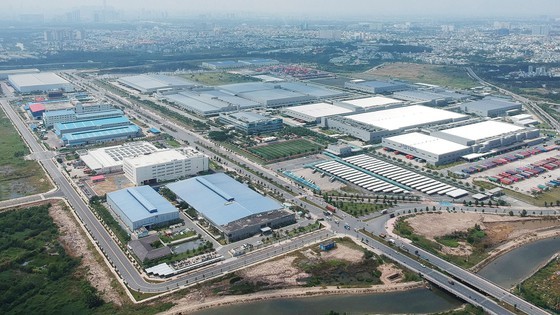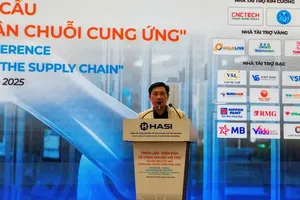
In the past years, the city has always shown dynamism and creativity and achieved many important achievements. In the renovation period, the city has constantly innovated by establishing and developing industrial parks, export processing zones, Quang Trung Software Park, and Saigon High-Tech Park (SHTP). It is also the city that decided to build the city into a smart city early. Especially, entering a new phase - the period of building a fast-growing and sustainable city and continuing to maintain the leading economic role of the whole country, HCMC has determined its leading task in implementing the new growth model. Since then, the city has advocated building the innovation district, as a starting point for the deployment of the fourth industrial revolution.
Mr. Nguyen Thien Nhan, Member of Politburo, Secretary of HCMC Party Committee, at a recent meeting of Prime Minister Nguyen Xuan Phuc and members of the Government with leaders of HCMC, affirmed that the city must determine long-term solutions and create momentum for economic development in the future. The center of that motivation is the highly interactive innovation district in the East of the city, including districts 2, 9, and Thu Duc.
This area has formed four important basic structures including the SHTP in District 9 which covers an area of 913 hectares. SHTP is currently filled up by 90 percent with 156 investment projects in the field of technology with a total investment of about US$7.1 billion. Last year, SHTP had a production value of about $15 billion and an export value of $14 billion, accounting for one-third of the total export value of the city. In the period from 2016 to 2020, SHTP has also developed strongly with an estimated export value of $70 billion, five times higher than that in the previous period. Currently, the city is building a new hi-tech park on an area of 195 hectares, about 2 kilometers away from the current SHTP.
Mr. Nguyen Thien Nhan, Member of Politburo, Secretary of HCMC Party Committee, at a recent meeting of Prime Minister Nguyen Xuan Phuc and members of the Government with leaders of HCMC, affirmed that the city must determine long-term solutions and create momentum for economic development in the future. The center of that motivation is the highly interactive innovation district in the East of the city, including districts 2, 9, and Thu Duc.
This area has formed four important basic structures including the SHTP in District 9 which covers an area of 913 hectares. SHTP is currently filled up by 90 percent with 156 investment projects in the field of technology with a total investment of about US$7.1 billion. Last year, SHTP had a production value of about $15 billion and an export value of $14 billion, accounting for one-third of the total export value of the city. In the period from 2016 to 2020, SHTP has also developed strongly with an estimated export value of $70 billion, five times higher than that in the previous period. Currently, the city is building a new hi-tech park on an area of 195 hectares, about 2 kilometers away from the current SHTP.
 Students program the electrical system automation at the High-Tech Park in the Highly Interactive Innovation District in the East of Ho Chi Minh City. (Photo: SGGP)
Students program the electrical system automation at the High-Tech Park in the Highly Interactive Innovation District in the East of Ho Chi Minh City. (Photo: SGGP)
This area also has the Vietnam National University Ho Chi Minh City in Thu Duc District. The 643-hectare university has more than 10,000 lecturers, of which, there are more than 1,000 professors and Ph.D., and around 100,000 students. Along with that is Thu Thiem new urban area in District 2 with the main function of being a commercial, financial, service, and modern residential center. The fourth foundation is the synchronous infrastructure network, such as Ben Thanh – Suoi Tien metro route, Long Thanh – Dau Giay expressway, and key traffic routes, including the National Highway 1, Hanoi Highway, and Pham Van Dong Street.
Currently, the Department of Planning and Architecture of HCMC is completing the project on establishing and developing the innovation district. This is a specific task under the management innovation program that the city is planning for the period from 2020 to 2025.
Earlier, through an international competition, consultant units affirmed that the potential and the choice of the Eastern region for the development of the innovation district is correct. This is to promote the advantages of the gateway, available service infrastructures (high-level training, advanced production, and financial and business center), along with the main technical infrastructure system that is being completed, to become a creative nuclear area that connects and supports urban areas in the region to develop together. According to the Department of Planning and Architecture, the innovation district will have features of a thriving urban area based on the service economy, science-technology, innovation, and creativity. This creates favorable conditions for the establishment of an urban development area focusing on comprehensive human development; to become the nucleus of the fourth industrial revolution, based on the key development base of the knowledge economy and development cooperation.
Specifically, when integrating districts 2, 9 and Thu Duc, it will create a dynamic area of 21,000 hectares with 1 million people, accounting for 10 percent of the population and 10 percent of the entire area of HCMC, but it is estimated to contribute 30 percent to the city's gross regional domestic product. Meanwhile, HCMC accounts for about 23 percent of the national gross domestic product, contributing 27 percent to the national budget - the role of HCMC for the whole country is extremely important. Therefore, when the city establishes a new driving force for economic development, it will continue to affect positively the national economy. However, it is essential to have a unified administrative management model when merging these three districts, as Mr. Nguyen Thien Nhan has proposed the Central Government to allow HCMC to merge these three districts into one city - as a provincial city - so this place can become an “economic punch" for Ho Chi Minh City and the whole country.
Currently, the Department of Planning and Architecture of HCMC is completing the project on establishing and developing the innovation district. This is a specific task under the management innovation program that the city is planning for the period from 2020 to 2025.
Earlier, through an international competition, consultant units affirmed that the potential and the choice of the Eastern region for the development of the innovation district is correct. This is to promote the advantages of the gateway, available service infrastructures (high-level training, advanced production, and financial and business center), along with the main technical infrastructure system that is being completed, to become a creative nuclear area that connects and supports urban areas in the region to develop together. According to the Department of Planning and Architecture, the innovation district will have features of a thriving urban area based on the service economy, science-technology, innovation, and creativity. This creates favorable conditions for the establishment of an urban development area focusing on comprehensive human development; to become the nucleus of the fourth industrial revolution, based on the key development base of the knowledge economy and development cooperation.
Specifically, when integrating districts 2, 9 and Thu Duc, it will create a dynamic area of 21,000 hectares with 1 million people, accounting for 10 percent of the population and 10 percent of the entire area of HCMC, but it is estimated to contribute 30 percent to the city's gross regional domestic product. Meanwhile, HCMC accounts for about 23 percent of the national gross domestic product, contributing 27 percent to the national budget - the role of HCMC for the whole country is extremely important. Therefore, when the city establishes a new driving force for economic development, it will continue to affect positively the national economy. However, it is essential to have a unified administrative management model when merging these three districts, as Mr. Nguyen Thien Nhan has proposed the Central Government to allow HCMC to merge these three districts into one city - as a provincial city - so this place can become an “economic punch" for Ho Chi Minh City and the whole country.
























